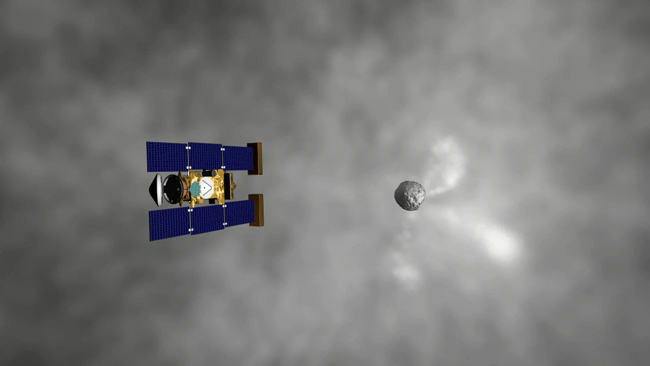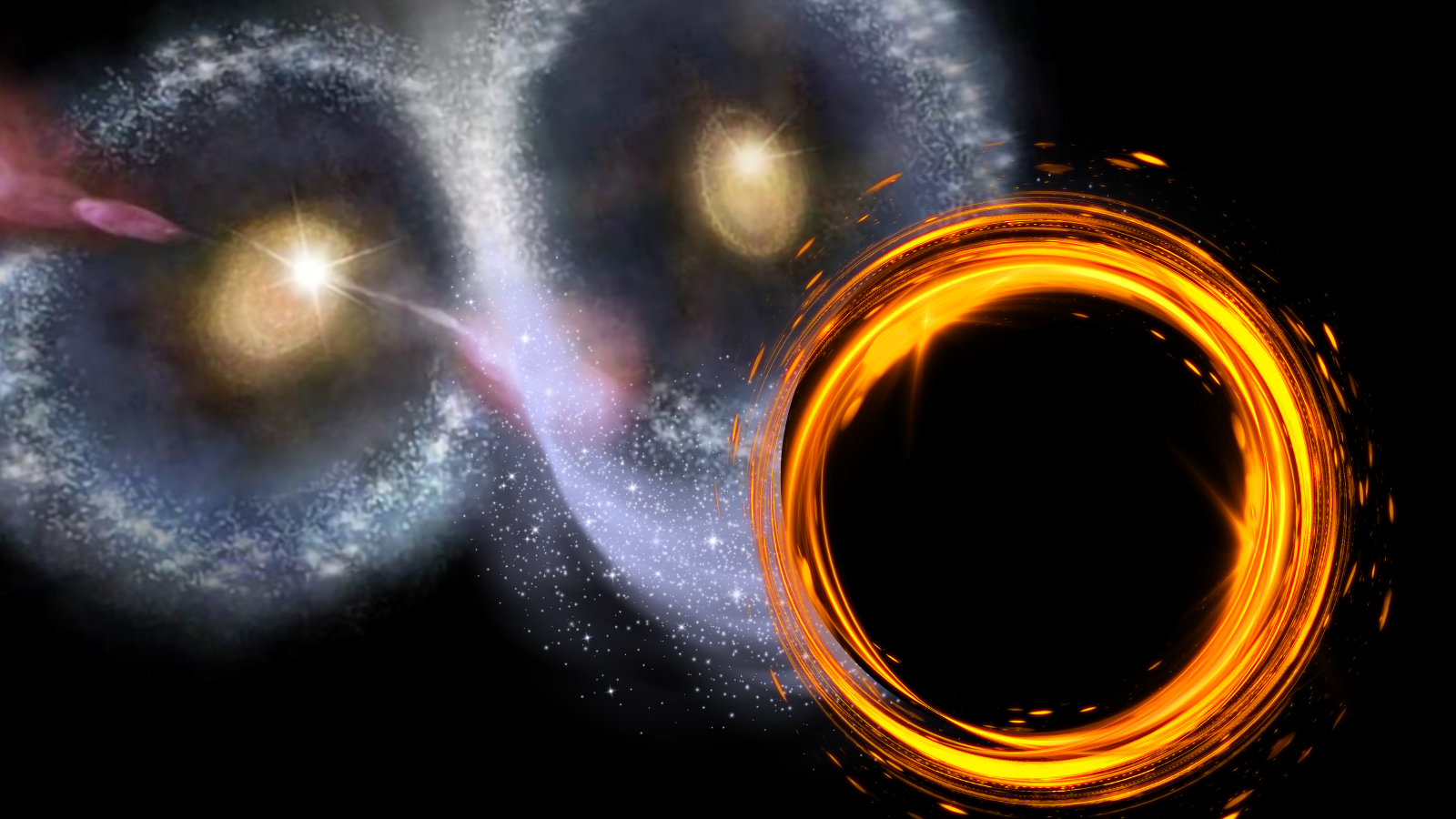Sampling the Solar System

HOUSTON, Texas - In a nationwhere obsessive collectors bestow value on everything from bean bag animals to baseballcards to anything the marketing department from Disney can pump out, there isone authoritative set of collectibles that is truly one of a kind and out ofthis world.
Theassortment contains bits of comet, samples of solar wind and particles ofinterstellar dust. Also, toss in loads of meteorites and the collected works ofApollo moonwalkers that lugged back to Earth lunar rock and dirt.
Allthis and more are under the care of the Astromaterials Acquisition and CurationOffice at the NASA Johnson Space Center (JSC). They curate the space agency'scurrent and future holdings of samples from out there.
Samplescan guide scientists in unraveling some of the unknowns surrounding the birthand evolution of our solar system and the emergence of life.
Busted up and dirty
Butsometimes being on the receiving end of solar system samples can proveunnerving.
Thatwas the case when NASA's Genesis sample container made a high-speed nosediveinto a Utah landing zone back in 2004--minus a parachute.
Breaking space news, the latest updates on rocket launches, skywatching events and more!
"Allthe samples came back to Earth. They just busted up and got dirty," saidCarlton Allen, Astromaterials Curator and Manager of the AstromaterialsAcquisition and Curation Office here at JSC.
However,it has been a painstaking job of extracting Utah mud, salt-filled water and shatteredspacecraft from whiffs of solar wind. "We're continuing to clean, analyze anddistribute samples. We're getting samples out and people are doing good sciencewith them," he told SPACE.com. "You can learn what the Sun was tellingus."
Stardust: prized cargo
OnJanuary 15 of this year, after more than 7 years and billions of miles oftravel through space, NASA's Stardust spacecraft deposited its return capsuleon Earth loaded with prized cargo: pristine samples of comet particles capturedduring the spacecraft's encounter with Wild 2 in January 2004. This timeparachute hardware worked as billed.
Scientistshave been busy studying this stash of primo specimens--nothing less than thefundamental building blocks of our Solar System that formed 4.6 billion yearsago.
"WithStardust, life's a whole lot easier," Allen said. "Less than a year aftermission return, we have high-quality science coming out of the science team."
In addition to discovering stardust, or particles older than the Sun, researcher recently announced they had found material from the hottest part of the solar system in a sample provided by Stardust.
Stardustsamples are now available to the worldwide science community at large onrequest and following a normal peer review process. "Everybody has a shot atStardust samples," Allen added.
Furthermore,thanks to Stardust@home -- http://stardustathome.ssl.berkeley.edu/index.php-- the public can volunteer to look for minuscule particles of interstellardust also bagged by Stardust. The intent is to locate the "best hits" in theStardust collector to be carefully removed next year for study at JSC and otherinstitutions.
Back to the Moon campaign
JSC'sAllen said that the need for Apollo lunar samples is on the upswing.
NASA'sback to the Moon campaign has meant a 50 percent increase in the number ofrequests for lunar rocks and dust returned by Apollo moonwalkers.
Researchersare studying everything from potential health hazards through inhalation oflunar dust to using samples for building purposes as well as for processing -particularly to make oxygen from lunar soil.
Atpresent, there are no formal plans within NASA to carry out land, scoop andreturn duties using robotic spacecraft.
Apolloastronauts brought back to Earth lunar specimens from 1969 through 1972. Butgiven future expeditionary returns to the Moon, Allen said more rocks and soilwill surely be transported back to Earth for further scientific scrutiny.
"Weunderstand mostly how to do that. We've been dealing with lunar rocks for30-plus years," Allen explained. "We know how to take care of rocks."
Red planet plans
Haulingback a suite of samples from Mars by automated means has long been on NASA'sred planet plans.
"Marsis a different kind of place," Allen noted. "There are planetary protectionconsiderations with any kind of Mars sample."
Astudy is now underway--led by the Jet Propulsion Laboratory--to investigate a roboticMars sample return mission--making use of Ares boosters that are part of NASA'sConstellation program, Allen said.
Inaddition, NASA's Mars Scout program has received sample return proposals, Allennoted.
Unusual phenomenon
Therecent revelation that Mars might be home for water-spewing gully action is anexciting prospect, Allen said. Nonetheless, dispatching any spacecraft to sucha locale would require adherence to planetary protection regulations - andassuredly a big boost in mission price tag.
"Wewould have to sterilize the entire spacecraft...something we did for the Vikinglanders...and not impossible to do," Allen explained.
"Theidea that there is liquid that close to the surface is going to make us rethinkour ideas about the thermal history of Mars," Allen said. "The thought thatthere are places on Mars you can go where you can sample liquid, or the remainsof a liquid flow that is absolutely modern, is very, very exciting."
Spottingbright material spilling out onto the surface of Mars, perhaps salts of somesort, is a "very unusual phenomenon," Allen observed.
Airless body
Pickingup bits of asteroids and toting them homeward are also being considered.
NASAselected in October several prospective Discovery-class missions. One of thosenow under study is the Origins Spectral Interpretation, Resource Identificationand Security (OSIRIS) mission.
OSIRISwould survey an asteroid and provide the first return of asteroid surfacematerial samples to Earth.
Howto deal with asteroid specimens and what sort of lab work and personnel would berequired is being reviewed.
"Weknow about asteroid material from our meteorite collection," Allen said. "Weknow about fine surface material from an airless body...from what we've done onlunar samples. And there's nothing like having two flight missions--Genesis andStardust--under our belts to give us the confidence to support others."
Ice: warm up act
Yetanother specimen to add to the NASA JSC curatorial collection is ice.
"Iceis something that we haven't dealt with before," Allen said. That materialmight be found in the lunar exploration program--loitering in sunlight shycraters--and is certainly part of a comet's makeup.
"Onceyou're out past the asteroid belt - there's ice everywhere," Allen pointed out.Sampling the icy face of Jupiter's moon Europa or Saturn's Enceladus would notbe easy.
"Oneof the things underway here over the next year is learning how to do curationin sub-freezing temperatures. We've never had to do that," Allen remarked.
Futurework is needed on how best to bring ice back frozen all the way home...or ways tomonitor the ice very carefully and understand exactly what changes might beinduced by an ice sample warming up on the trek back to Earth.
"That'sone of the frontier areas that we want to work," Allen said.
- Image Gallery: Comets
- Image Gallery: Welcome Back: Stardust Returns Home
- Image Gallery: Deep Impact Collides With Tempel 1
- Genesis Special Report: Bringing Solar Wind Down to Earth
- Space Missions: Chasing Comets and Asteroids
- Full Circle: NASA's Stardust Probe Returns Home with Comet Samples

Leonard David is an award-winning space journalist who has been reporting on space activities for more than 50 years. Currently writing as Space.com's Space Insider Columnist among his other projects, Leonard has authored numerous books on space exploration, Mars missions and more, with his latest being "Moon Rush: The New Space Race" published in 2019 by National Geographic. He also wrote "Mars: Our Future on the Red Planet" released in 2016 by National Geographic. Leonard has served as a correspondent for SpaceNews, Scientific American and Aerospace America for the AIAA. He has received many awards, including the first Ordway Award for Sustained Excellence in Spaceflight History in 2015 at the AAS Wernher von Braun Memorial Symposium. You can find out Leonard's latest project at his website and on Twitter.
